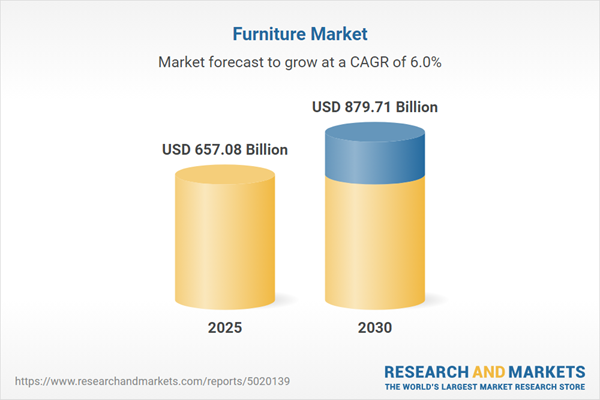The furniture market is experiencing substantial growth fueled by increasing disposable incomes, a growing middle class, and urbanization. This growth is evident in both the residential and commercial sectors, with a rising preference for customized, eco-friendly, and ergonomic furniture. The expansion of e-commerce is also transforming distribution channels.
Key Growth Drivers:
- Residential and Commercial Infrastructure Development: The global residential construction market is expanding due to rising disposable incomes and urbanization. Governmental initiatives, such as India's Smart Cities Mission and infrastructure development policies in the Middle East (e.g., Saudi Vision 2030, UAE Vision 2021, and UAE Vision 2023), are also boosting the furniture market.
- Customization and Aesthetics: There's a rising trend for customized furniture that meets aesthetic preferences and space requirements, especially in the residential sector.
- Sustainability: The demand for eco-friendly and sustainable furniture, including furniture made from recycled materials, is increasing.
- Ergonomics: Driven by office spaces and the work-from-home trend, there's growing demand for furniture that promotes good posture and reduces the adverse effects of prolonged sitting.
Geographical Outlook:
- Asia-Pacific: The Asia-Pacific region is expected to have significant growth in the global furniture market, driven by major developing countries like India and China. Rapid urbanization, a growing middle-class population, rising disposable incomes, and a boom in real estate and construction industries are contributing to this surge in demand for both residential and commercial furniture.
Reasons for buying this report::
- Insightful Analysis: Gain detailed market insights covering major as well as emerging geographical regions, focusing on customer segments, government policies and socio-economic factors, consumer preferences, industry verticals, other sub- segments.
- Competitive Landscape: Understand the strategic maneuvers employed by key players globally to understand possible market penetration with the correct strategy.
- Market Drivers & Future Trends: Explore the dynamic factors and pivotal market trends and how they will shape up future market developments.
- Actionable Recommendations: Utilize the insights to exercise strategic decision to uncover new business streams and revenues in a dynamic environment.
- Caters to a Wide Audience: Beneficial and cost-effective for startups, research institutions, consultants, SMEs, and large enterprises.
What can businesses use this report for?
Industry and Market Insights, Opportunity Assessment, Product Demand Forecasting, Market Entry Strategy, Geographical Expansion, Capital Investment Decisions, Regulatory Framework & Implications, New Product Development, Competitive Intelligence.Report Coverage:
- Historical data & forecasts from 2022 to 2030
- Growth Opportunities, Challenges, Supply Chain Outlook, Regulatory Framework, Customer Behaviour, and Trend Analysis
- Competitive Positioning, Strategies, and Market Share Analysis
- Revenue Growth and Forecast Assessment of segments and regions including countries
- Company Profiling (Strategies, Products, Financial Information, and Key Developments among others)
Furniture Market is analyzed into the following segments:
By Furniture Type
- Residential
- Commercial
By Distribution Channel
- Online
- Offline
By Geography
- North America
- USA
- Canada
- Mexico
- South America
- Brazil
- Argentina
- Others
- Europe
- Germany
- France
- United Kingdom
- Spain
- Others
- Middle East and Africa
- Saudi Arabia
- Israel
- Others
- Asia Pacific
- China
- Japan
- South Korea
- India
- Thailand
- Taiwan
- Indonesia
- Others
Table of Contents
Companies Mentioned
- KOKUYO Co. Ltd.
- Ashley Home Stores Ltd.
- Haworth Inc.
- OKAMURA CORPORATION
- Inter IKEA Systems B.V.
- HNI Corporation
- Kimball International, Inc.
- Herman Miller, Inc.
- Godrej and Boyce Mfg. Co. Ltd.
- Steelcase Inc.
Table Information
| Report Attribute | Details |
|---|---|
| No. of Pages | 140 |
| Published | January 2025 |
| Forecast Period | 2025 - 2030 |
| Estimated Market Value ( USD | $ 657.08 Billion |
| Forecasted Market Value ( USD | $ 879.71 Billion |
| Compound Annual Growth Rate | 6.0% |
| Regions Covered | Global |
| No. of Companies Mentioned | 10 |









